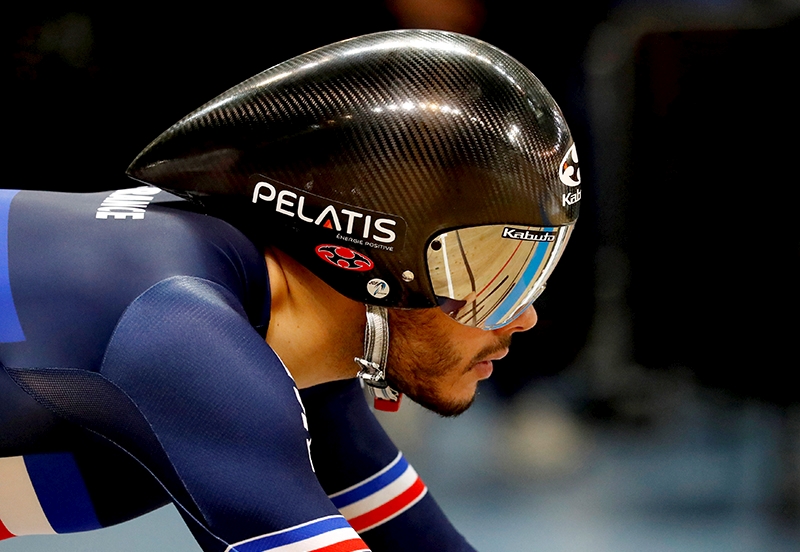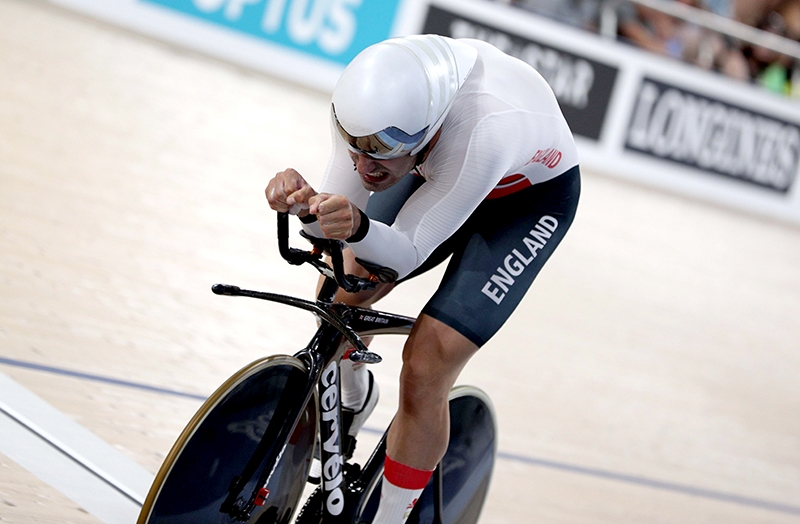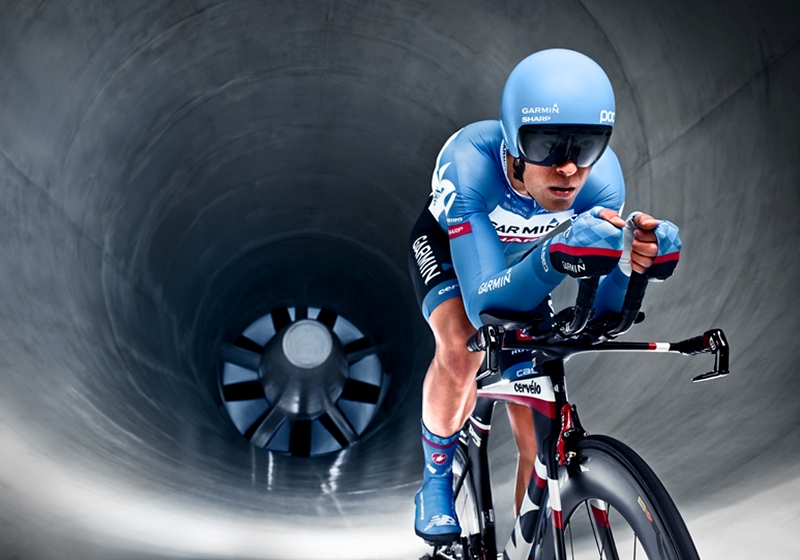You are viewing 1 of your 1 free articles. For unlimited access take a risk-free trial
Cycling aerodynamics: use your head!

Andrew Hamilton explains why using aero helmets is almost always a win-win for cyclists seeking maximum performance
Unless you’re tackling a major climb and finishing your ride at the summit, the main obstacle you have to overcome as a cyclist is wind resistance. And since wind resistance increases as the cube of your speed, the main effects are felt when you try to ride fast, which explains the popularity of aero equipment for cyclists. Because the human head is not particularly aerodynamic, helmet use can help to reduce wind resistance significantly.The best helmets in this respect are ‘aero helmets’, which have a completely smooth and appropriately shaped surface. Vented helmets on the other hand are not as aerodynamic, but the much greater airflow across the head they afford means that it’s easier to keep cool in warm weather conditions. And that’s important since we know that when the body’s core temperature rises, the ability to sustain high power outputs drops. With spring just around the corner, this leads to a bit of a conundrum for warm weather riding; does the extra aero advantage from an aero helmet outweigh the possible power losses due to overheating and if so, would a vented helmet be better? This is exactly the question that US researchers attempted to answer investigated in a fascinating study(1).
Aero vs. vented
In this study, the scientists tested the theory that while non-vented aero helmets reduce wind resistance, they also increase head and gastrointestinal temperatures, which subsequently results in a drop in performance when worn in hot conditions. To do this, they compared the effects of wearing an aero-helmet vs. a traditional vented racing helmet on head and gastrointestinal temperatures, power output and time taken to complete a time trial ridden in very hot conditions (39C/102F). On two separate occasions, ten highly-trained, heat-acclimatised cyclists performed a period of low-intensity cycling followed by a flat-out 12km time trial on a cycle ergometer with an ambient temperature of 39°C. On one occasion, they wore aero helmets while on the other, they wore a vented racing helmet. During each trial, the researchers recorded, head and gastrointestinal temperatures as well as power outputs and time trial times.Head temperatures
The first finding was that the head temperature of the cyclists was significantly higher when they wore the aero helmet, even during the low-intensity part of the trial. The average gastrointestinal temperature and heart rate also rose throughout the trials but the magnitude of this rise was the same regardless of which helmet type was worn. However, when it came to the nitty-gritty – ie power output and actual time trial times - there were no performance differences between the aero helmet and the vented helmet, despite the fact that wearing the aero helmet resulted in higher head temperatures.What does this mean for cyclists?
Given that improving a cyclist’s aerodynamics is a proven way to ride faster, these results make encouraging reading for those seeking a more ‘aero profile’ because they suggest a more aero (ie less vented) helmet doesn’t automatically result in overheating. Of course, a 12km time trial is a relatively short event and in longer events, the issue of overheating could be more problematical. However, the ambient temperature of 39C (102F) used in this study is incredibly hot; even in a good summer, the number of days where the mercury reaches 30C (86F) can be counted on one hand, especially if you live in more temperature northern latitudes such as the north of England or Scotland, or Alaska/northern seaboard states. In more temperate spring/early summer/autumn conditions where temperatures rarely exceed the low-mid 20s (70-75F), a rider wearing a full aero helmet is unlikely to suffer any adverse effects due to heat buildup even during much longer events.Reference
- Journal of Strength and Conditioning Research. 27(12):3402–3411, DEC 2013
Newsletter Sign Up
Testimonials
Dr. Alexandra Fandetti-Robin, Back & Body Chiropractic
Elspeth Cowell MSCh DpodM SRCh HCPC reg
William Hunter, Nuffield Health
Further reading
Newsletter Sign Up
Coaches Testimonials
Dr. Alexandra Fandetti-Robin, Back & Body Chiropractic
Elspeth Cowell MSCh DpodM SRCh HCPC reg
William Hunter, Nuffield Health
Keep up with latest sports science research and apply it to maximize performance
Today you have the chance to join a group of athletes, and sports coaches/trainers who all have something special in common...
They use the latest research to improve performance for themselves and their clients - both athletes and sports teams - with help from global specialists in the fields of sports science, sports medicine and sports psychology.
They do this by reading Sports Performance Bulletin, an easy-to-digest but serious-minded journal dedicated to high performance sports. SPB offers a wealth of information and insight into the latest research, in an easily-accessible and understood format, along with a wealth of practical recommendations.
*includes 3 coaching manuals
Get Inspired
All the latest techniques and approaches
Sports Performance Bulletin helps dedicated endurance athletes improve their performance. Sense-checking the latest sports science research, and sourcing evidence and case studies to support findings, Sports Performance Bulletin turns proven insights into easily digestible practical advice. Supporting athletes, coaches and professionals who wish to ensure their guidance and programmes are kept right up to date and based on credible science.













